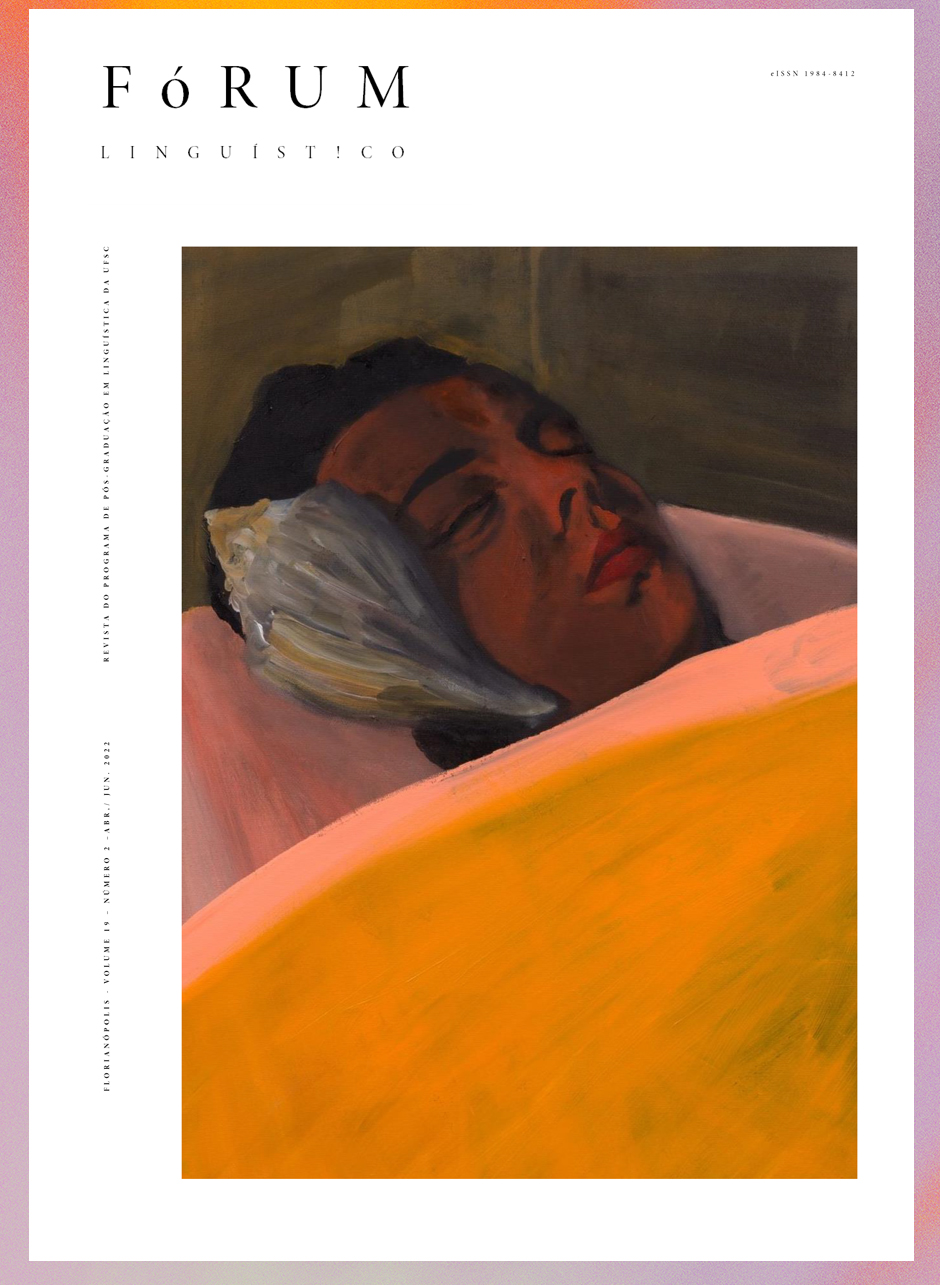Elaboración de material didáctico para ELE: abordaje cognitivo en la enseñanza del español Hispanoamericano
DOI:
https://doi.org/10.5007/1984-8412.2022.e83625Resumen
Este artículo tiene por objetivo presentar el proceso de elaboración de material didáctico para la enseñanza del español como lengua extranjera, orientado a estudiantes adultos hablantes de portugués. La elaboración del material se vincula a los trabajos de “Enseñanza y consultoría del español como lengua extranjera y para fines específicos” de la empresa Vaivén Hispano. Este proceso está fundamentado en planteamientos de la lingüística cognitiva para la enseñanza de lenguas extranjeras (RUIZ, 2007; IBARRETXE-ANTUÑANO, 2019) y en la perspectiva didáctica de la Enseñanza del Lenguaje Mediante Tareas (ELMT) (ESTAIRE; ZANÓN, 1990). Se toma una muestra de dos unidades didácticas de nivel inicial (A2) y avanzado (C1) para ejemplificar la estructuración del material y los criterios considerados para su elaboración. Se finaliza con algunas consideraciones importantes y necesarias a partir de nuestra experiencia en la elaboración del proyecto.
Citas
BYBEE, J. Língua, uso e cognição. Trad. Maria Angélica Furtado da Cunha; revisão técnica de Sebastião Carlos Leite Gonçalves. São Paulo: Cortez, 2016.
CAETANO SILVA, T. Framework Ponte TAP: Gestão da curva de aprendizagem para efetivação da transferência de aprendizagem para a prática do trabalho. 2019. Tese (Doutorado em Gestão do Conhecimento), Faculdade de Engenharia e Gestão do Conhecimento, Universidade Federal de Santa Catarina, Florianópolis, 2019.
ESTAIRE, S.; ZANÓN, J. El diseño de unidades didácticas mediante tareas. CL & E. Comunicación, lenguaje y educación [S.l.], n. 7-8, p. 55-90. 1990.
ESTAIRE, S. La enseñanza de lenguas mediante tareas: principios y planificación de unidades didácticas. Tareas EPA: enfoque por tareas y enseñanzas en EL2 para la educación permanente. España. 2005. Disponible en: https://dialnet.unirioja.es/servlet/libro?codigo=496869. Acceso en: 30 oct. 2020.
IBARRETXE-ANTUÑANO, I.; CADIERNO, T.; CASTAÑEDA, A. Lingüística Cognitiva y español LE/L2. Reino Unido: Routledge, 2019.
LLOPIS-GARCÍA, R. Gramática Cognitiva para la enseñanza del español como Lengua Extranjera: Un estudio con aprendientes alemanes de español como lengua extranjera. Colección Monografías, n. 14, ASELE, Ministerio de Educación, 2011.
LLOPIS-GARCÍA, R. Las preposiciones y la metáfora del espacio: aportaciones y potencial de la lingüística cognitiva para su enseñanza. In: Journal of Spanish Language Teaching, v. 2, n. 1, p. 51-68. 2015.
LLOPIS-GARCÍA, R. Using Cognitive Principles in Teaching Spanish L2 Grammar. In: Madel Carmen Méndez Santos (coord.). Nuevas perspectivas en la enseñanza del español como lengua extranjera. Hesperia, XIX(2), 2016. p. 29-50.
LLORIÁN, S. Entender y utilizar el Marco común europeo de referencia desde el punto de vista del profesor. España: Santillana, 2007.
NIETO, V. Aula América. Manual de español para extranjeros. In: IV CONGRESO INTERNACIONAL DEL SICELE, 7, 8 y 9 de noviembre de 2018, Rosario (Argentina). Actas. España: SICELE. Disponible en: https://asociacionsicele.org/es/node/90. Acceso en: 18 ene. 2021.
ROBINSON, P.; N.C. ELLIS. Handbook of Cognitive Linguistics and second language acquisition. New York: Routledge, 2008.
RUIZ CAMPILLO, J. Gramática Cognitiva y ELE. marcoELE, Revista de didáctica ELE. n. 5, p. 1-17, noviembre, 2007.
SANS, N. Criterios para la evaluación y el diseño de materiales didácticos para la enseñanza de ELE: antología. España: Instituto Cervantes, 2000. Disponible en: https://cvc.cervantes.es/ensenanza/biblioteca_ele/antologia_didactica/enfoque_comunicativo/sans01.htm. Acceso en: 30 oct. 2020.
ZANÓN, J.La enseñanza de las lenguas extranjeras mediante tareas: artículo. [S.l.] Signos. Teoría y práctica de la educación. p. 52-67, 1995. Disponible en: http://www.quadernsdigitals.net/datos_web/hemeroteca/r_3/nr_42/a_639/639.html. Acceso en: 30 oct. 2020.
Descargas
Publicado
Número
Sección
Licencia

Esta obra está bajo una licencia internacional Creative Commons Atribución-NoComercial-SinDerivadas 4.0.
Los trabajos publicados pasan a ser de derecho de la Revista Fórum Linguístico, quedando su reimpresión, total o parcial, sujeta a la autorización expresa del Consejo de Redacción de la revista. Debe ser consignada la fuente de publicación original.


